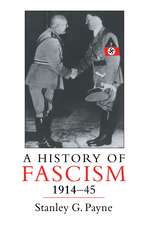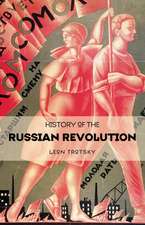Memory and Representation in Contemporary Europe: The Persistence of the Past
Autor Siobhan Kattagoen Limba Engleză Hardback – 28 ian 2012
| Toate formatele și edițiile | Preț | Express |
|---|---|---|
| Paperback (1) | 278.13 lei 6-8 săpt. | |
| Taylor & Francis – 22 mai 2017 | 278.13 lei 6-8 săpt. | |
| Hardback (1) | 698.17 lei 6-8 săpt. | |
| Taylor & Francis – 28 ian 2012 | 698.17 lei 6-8 săpt. |
Preț: 698.17 lei
Preț vechi: 821.37 lei
-15% Nou
Puncte Express: 1047
Preț estimativ în valută:
133.61€ • 138.03$ • 111.20£
133.61€ • 138.03$ • 111.20£
Carte tipărită la comandă
Livrare economică 26 martie-09 aprilie
Preluare comenzi: 021 569.72.76
Specificații
ISBN-13: 9781409436379
ISBN-10: 1409436373
Pagini: 152
Dimensiuni: 156 x 234 x 10 mm
Greutate: 0.45 kg
Ediția:1
Editura: Taylor & Francis
Colecția Routledge
Locul publicării:Oxford, United Kingdom
ISBN-10: 1409436373
Pagini: 152
Dimensiuni: 156 x 234 x 10 mm
Greutate: 0.45 kg
Ediția:1
Editura: Taylor & Francis
Colecția Routledge
Locul publicării:Oxford, United Kingdom
Notă biografică
Siobhan Kattago is Senior Research Fellow in Philosophy at the University of Tartu, Estonia. She is the editor of The Ashgate Research Companion to Memory Studies and the author of Ambiguous Memory: The Nazi Past and German National Identity.
Recenzii
'A remarkable synthesis of what has conventionally been referred to as the field of "collective memory." This is a gripping account in which Siobhan Kattago thoughtfully assesses the possibility of achieving democratic regimes and peaceful international relations albeit in the wake of intolerable pasts. This book should be an invaluable guide for those facing the challenge of remaking a world that desperately needs to come to terms with these pasts.' Vera Zolberg, New School for Social Research, USA 'Memory, Siobhan Kattago argues, is a slippery slope: too much memory can make one a slave to the past, but too little can undermine identity and lead to repetition. Insightfully addressing this tension, Memory and Representation in Contemporary Europe combines rigorous empirical analyses with state of the art theorizing. It is essential reading for anyone who wants to understand both contemporary Europe as well as the narrative constitution of modernity.' Jeffrey Olick, University of Virginia, USA 'Memory and Representation in Contemporary Europe comprises essays already published elsewhere, but gathering them together gives the reader a more coherent perspective on the topic. This collection of essays is an important contribution to the study of collective memory and to the theoretical analysis of the role of the past and history for today’s European societies... Kattago’s book is a good study on the importance of history and the past in contemporary Europe. The condensed format allows a good overview of the subject and thanks to that Kattago’s book can be a useful starting point to explore the topic. Clear language coupled with a smooth style of writing add to the philosophy of history that Siobhan Kattago offers to both historians as well as others interested in the topic... Kattago’s book is a solid and interesting piece of academic writing...' H-Memory 'Kattago’s discussion makes a timely contribution to our understanding of democracy as something ba
Cuprins
Introduction; Chapter 1 The Slippery Slope of Memory; Chapter 2 Agreeing to Disagree on the Legacies of Recent History; Chapter 3 The Ethics of Seeing: Photographs of Germany at the End of the War; Chapter 4 The Sound of Silence: Reflections on Bernhard Schlink and Gesine Schwan; Chapter 5 Living in the Third Person: The Uncanny Hans Schneider/Schwerte; Chapter 6 Goodbye to Grand Narratives? Moving the Soviet War Memorial in Tallinn; Chapter 7 Memory, Pluralism and the Agony of Politics; Chapter 8 The Fata Morgana of Revolution; postscript Postscript;
Descriere
Through reflecting on the legacy of totalitarianism and the revolutions of 1989, it becomes clear that the issue is less of whether one should remember, but rather how to internalize the various lessons of the past for the future of Europe. Memory and Representation in Contemporary Europe thus offers the reader occasions upon which to take stock of different but overlapping contours of past and present in contemporary Europe.









